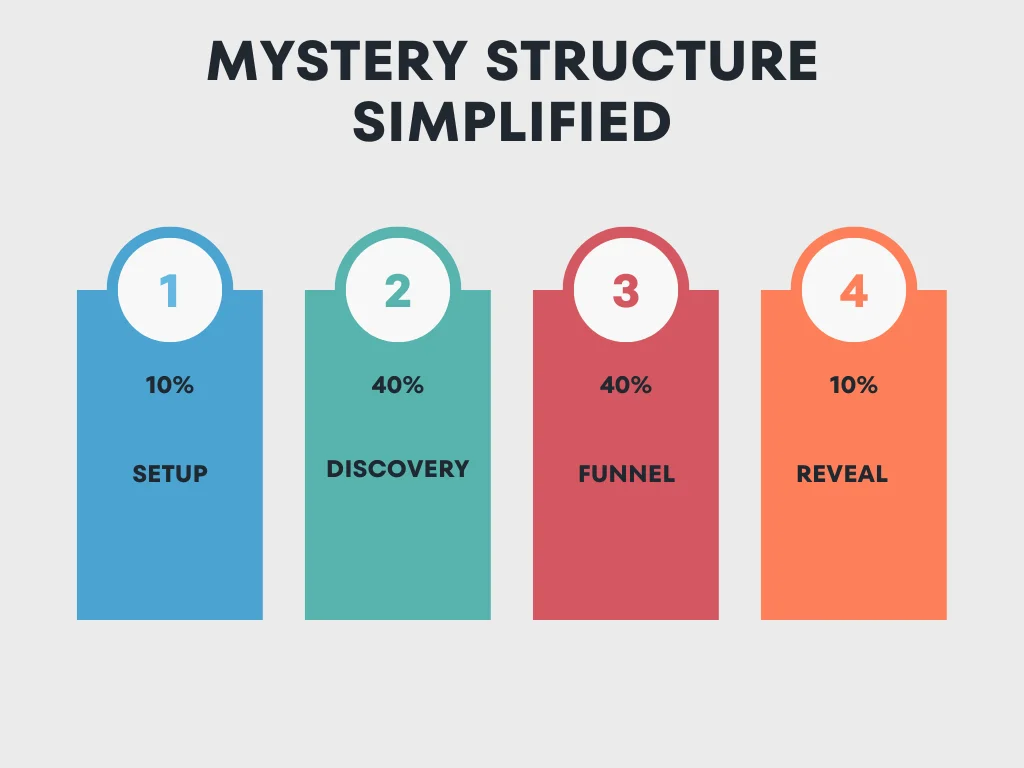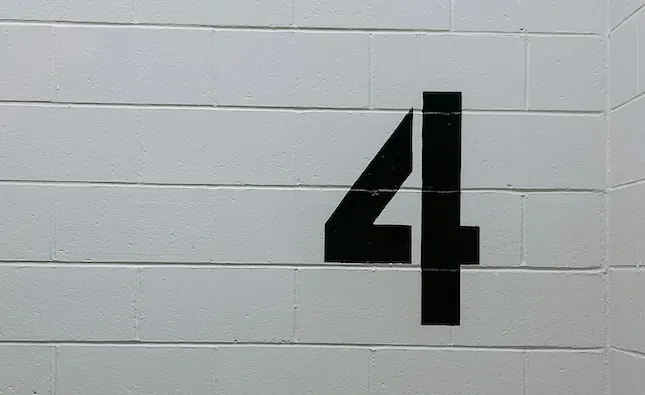Mystery Novel Structure Simplified

If you are trying to find the right structure for your mystery and your head is swirling, this condensed structure may help you get to writing your story.
It’s easy to get lost in counting beats or where the next pinch point is or worse, wondering if this scene is the pinch point.
While you are writing your first draft, your primary goal is to get the story written. You may have a plan, an outline, a plot of how you will present the puzzle and how your sleuth will go about discovering the villain. Or you may not know who the villain is, or change who the villain is, as you write.
To keep structure simple, think of your mystery novel as having four parts. Within each part style, voice, psychological depth, action, dialogue, and setting are up to your discernment. But, to satisfy the mystery reader’s desire for a puzzle, following this four-part structure will help you meet reader expectations.
Part One – Introduction and Setup
Plunge your reader into your story by introducing your protagonist sleuth and their world.
- Give a sense of time and place.
- Introduce the sleuth
- Show you sleuth in action
- Demonstrate at least one of your sleuth’s detecting skills
- Introduce the crime, usually a murder
- You sleuth takes on the case, whether voluntarily or assigned
The first section of your story sets your reader expectations of whether they want to follow your sleuth through the entire puzzle-solving story. Give your reader to care about your protagonist sleuth. Give your sleuth a reason to care about solving the crime.
Part Two – The Discovery Phase
Once your sleuth takes on the case, they venture into a discovery phase. They look for clues, evidence, and revelations that will help them identify the villain.
- The victim’s world – who and what was in that world
- Evidence and clues about the crime
- Identify suspects from within the victim’s world
- Interview suspects to learn more about the victim and the suspects
- Formulate hypotheses and raise questions about the crime and about the various suspects
- Introduce subplots
This section of your mystery is all about expanding the reader’s view of what happened and who might have been involved. Your sleuth speculates on relationships and motivations.
Midpoint
At the midpoint, your detective comes up short. It seems that everything that they thought about the puzzle is wrong. Your detective may become discouraged or even want to give up until…they have a new perspective on everything they’ve learned so far.
Part Three – The Funnel
Once your sleuth starts looking in new ways, they dig deeper, reexamining and rethinking everything they’ve discovered.
- New viewpoint puts everything so far in a different light
- As your sleuth reviews what they know, they uncover new interpretations
- Questioning the old way, they re-examine and interview suspects a second or even third time, gaining new information
- Eliminate suspects
- Narrow the focus to one
- Close subplots
From all the evidence and knowledge collected in the first half, your sleuth uses their skills to narrow the focus down to the one possible suspect—the villain.
Part Four – Reveal
Your reader has followed your sleuth, trying to outguess them throughout the story. If you’ve hinted and misdirected, the reveal of the real villain will be a surprise. That’s your reader’s reward for following your detective and reading your story.
- Confront the villain
- Explain how your detective solved the puzzle
- Conclude the story
Once you’ve rewarded your reader revealing the villain, bring your story to a quick conclusion. While mystery readers love the puzzle, once it is solved, they won’t hang around for much more. Give them a sense of satisfaction by focusing on the reveal. For your reader, that’s the end of the story.
The Four-Part Structure to Speed Your Writing
This four-part structure works as an overview to your story as you write. You won’t get bogged down with which beat goes where, or wondering if your story fits a detailed outline.
Some writers want to plan everything before they write. That planning does help speed writing because they know what happens in each scene.
For beginning writers, this simplified structure helps you frame where you are in the mystery without getting lost in plot questions. You can use your editing time to make all the beat adjustments.
The first draft is about getting your story done. So think
- Setup
- Expand
- Contract
- Reveal
You’ll write your mystery in flow state.
Ready to focus on your first mystery? Write A Killer Mystery is the course for you. Go from story idea to The End.






